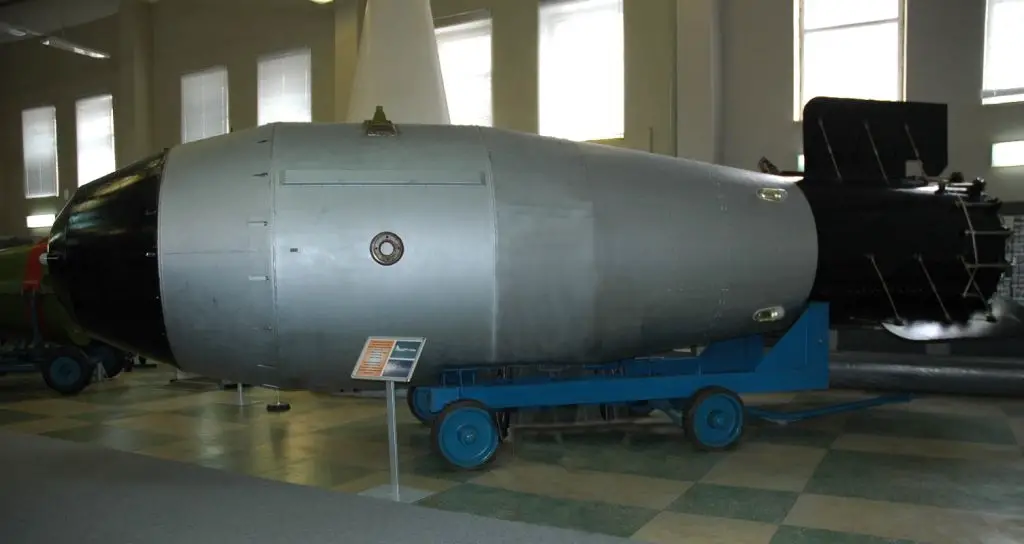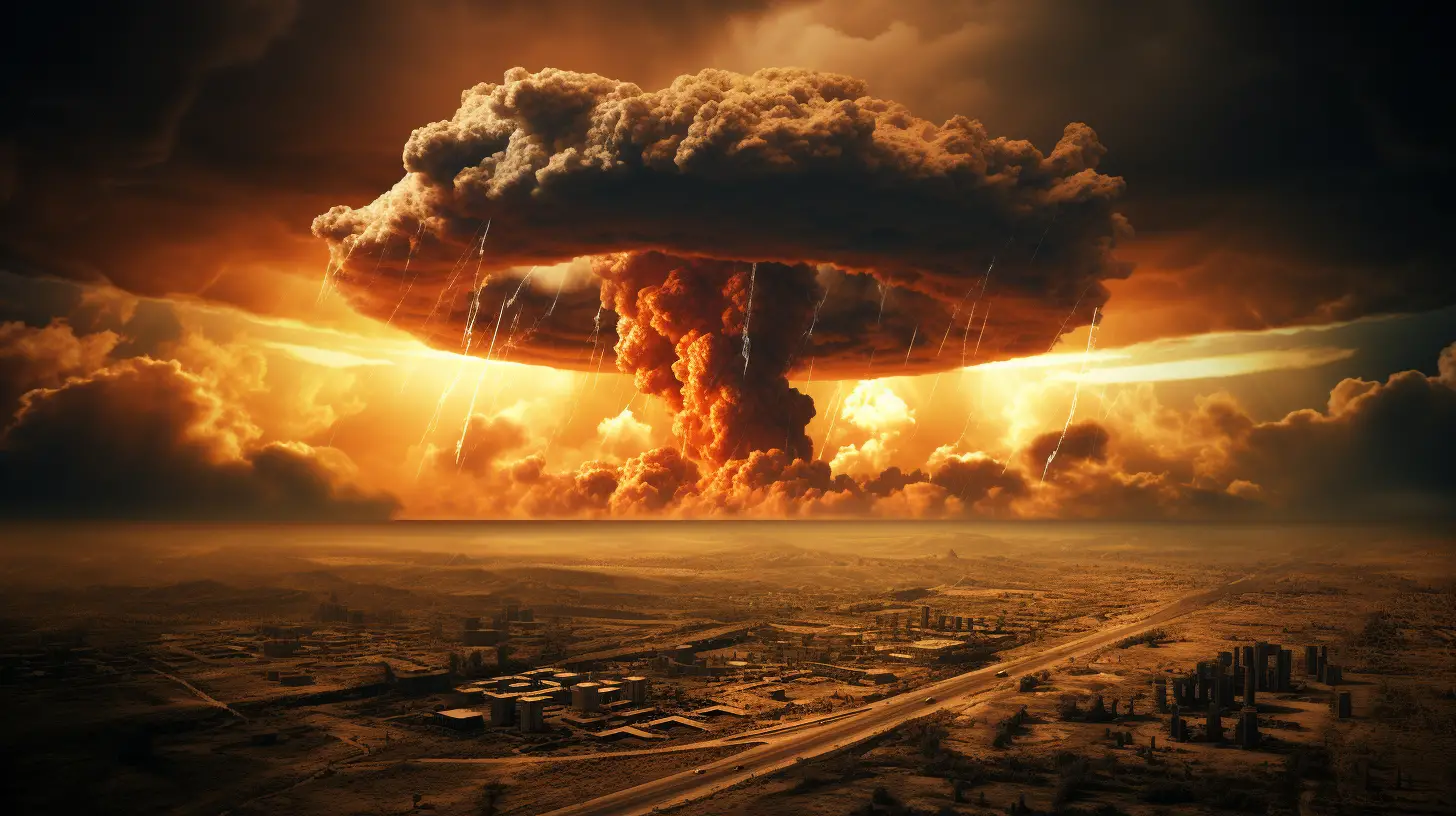Few events in the annals of human history are as impactful as the detonation of “Tsar Bomba” or the “King of Bombs.” The manifestation of the Cold War’s tension, the Tsar Bomba represents the extreme lengths humanity can go in its pursuit of power and dominance. The test of this unparalleled device marked a new chapter in the history of thermonuclear weaponry, establishing the Soviet Union’s place in the international nuclear hierarchy.
Let’s delve into the fascinating world of the Tsar Bomba, and uncover 25 interesting facts about this incredible artifact of the nuclear age.
- The Largest Ever Detonated: The Tsar Bomba, officially designated as AN602, remains the most potent explosive device ever detonated by mankind. It was roughly 1,570 times more powerful than the combined yield of the bombs dropped on Hiroshima and Nagasaki during World War II.
- Unprecedented Yield: The Tsar Bomba had a yield of approximately 50 megatons of TNT. To put that into perspective, that’s over 3,300 times the power of the bomb that destroyed Hiroshima.
- October 30, 1961: The Tsar Bomba was detonated on October 30, 1961, as part of the USSR’s nuclear testing regime amidst Cold War tensions.
- Novaya Zemlya: The bomb was detonated over the Novaya Zemlya archipelago in the Russian Arctic Sea, at a height of about 4 kilometers.
- Limited Fallout: Despite its massive yield, the Tsar Bomba had relatively limited radioactive fallout. This was because it was detonated so high above the ground, and its design was aimed at maximizing yield while minimizing fallout.
- Powerful Shockwave: The Tsar Bomba’s shockwave was so powerful that it circled the earth three times.
- Visible from Space: The mushroom cloud produced by the Tsar Bomba reached a height of about 67 kilometers, which was visible from space.
- Designed for Double the Yield: The original design of Tsar Bomba was to have a yield of 100 megatons. However, it was halved to reduce nuclear fallout.
- Rapid Development: The Tsar Bomba was developed in a remarkably short span of time. The work started in July 1961 and was ready for testing by October of the same year.
- The Weight: Tsar Bomba was a heavyweight, literally. It weighed around 27 metric tons.
READ MORE: 25 Interesting Facts about “Trinity”, The First Atomic Bomb Test - Size of the Bomb: The bomb was so large (around 8 meters long and 2 meters in diameter) that a special parachute had to be developed to slow its descent after being dropped from the plane.
- Temperature at Ground Zero: The heat from the detonation was so intense that it could cause third-degree burns up to 100 kilometers away.
- Limited Test: Despite its enormity, the Tsar Bomba was tested only once.
- Destruction Radius: The bomb’s fireball had a radius of about 2.3 kilometers, with the total destruction radius extending up to 35 kilometers.
- Dedication: The bomb was dedicated to Andrei Sakharov, the Soviet physicist often referred to as the “father of the Soviet hydrogen bomb.”
- Unusable in War: Despite its power, Tsar Bomba was deemed impractical for use in warfare due to its size and weight, making it difficult to deliver.
- Flight Crew Survival: The flight crew that dropped the Tsar Bomba only had a 50% chance of survival estimated before the mission. They survived.
- Plane Modifications: The plane, a Tu-95 bomber, was heavily modified to accommodate the Tsar Bomba, including the removal of the bomb bay doors and fuselage fuel tanks.
- Parachute Descent: The parachute used to slow Tsar Bomba’s descent was nearly a kilometer in diameter.
- Impact on Environment: Despite its high altitude detonation, Tsar Bomba’s blast was reported to have caused damage up to 1,000 kilometers away.
READ MORE: 25 Interesting Facts About “Fat Man”, the Atomic Bomb Dropped on Nagasaki - Détente Factor: The detonation of the Tsar Bomba played a significant role in promoting nuclear disarmament and initiating the era of détente or easing of strained relations.
- Window Breaker: The shockwave broke windows as far away as Norway and Finland.
- Secret for Years: The exact details of the Tsar Bomba remained a closely guarded secret for many years after the test.
- End of an Era: The Tsar Bomba’s detonation marked the end of the era of atmospheric nuclear testing. The Limited Test Ban Treaty of 1963 prohibited all test detonations of nuclear weapons except for those conducted underground.
- Symbol of Power: Despite its impracticality in warfare, the Tsar Bomba served as a potent symbol of the USSR’s scientific and military prowess during the Cold War.
READ MORE: 25 Interesting Facts about “Little Boy”, the Atomic Bomb Dropped on Hiroshima
The Tsar Bomba, with its unmatched destructive capability, stands as a stark reminder of the perilous arms race that characterized the Cold War. Despite its frightful potential for devastation, the Tsar Bomba incident played an essential role in promoting nuclear disarmament, thus ultimately contributing to global peace. The lessons learned from this episode continue to guide humanity’s collective approach to nuclear technology, highlighting the importance of using scientific advancements for the betterment of mankind, rather than its destruction.


